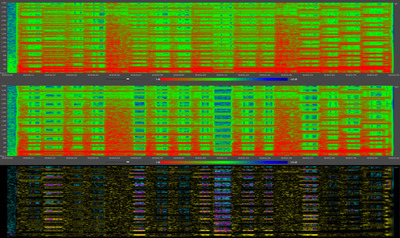Hi OPLx, I hope I did not stressed you with that issue, I know is must be the third time I bring it to your attention. Having an hobby can become a burden if you feel an obligation to work on it and it's not what I'm trying to achieve. On the opposite, I was in the impression that to document the problem would allow to securely postpone the fix.
From wikipedia and smspower we can read that the "AN" designate the packaging and the presence of an audio in. They also say that sega used the AN in sg-1000 and sc-3000 but used a clone in the VDP chip. Although on a seemingly more complete documentation we can read that "Up to 4 MHz Clock input: Part SN76489N is identical to the SN76489A except that the maximum clock input frequency is 500 kHz. A "divide by eight" stage is deleted from the input circuitry and only 4 clock pulses are required to load the data, compared to 32 pulses from the SN76489AN."... oh well I'm not sure what to make of all that.
I did try to play the problematic musics lowering the speed on my own "player" (if you call your player an experimentation, then we should call mine a bunch of code line thrown together that luckily work) and what I noticed is those loud bass notes always appear when a 0x00 value is from the 0x50 instruction. Resetting the PSG at this moment (sending 0x9f, 0xbf, 0xdf, 0xff) did not help, I seem to remember some test related to that from you. the sn76489an dont seem to like receiving that 0x00 instruction, but on another hand stripping it from the stream dont seem to be the solution either.
